The motif of the tsuba on this katana is Musashino, the grasses of the Musashi plains. We can see blades of grass with dewdrops and ripe seed heads. The design of this tsuba is a sukashi. In Japanese sword terminology, or rather in tsuba (sword guard) terminology, the word sukashi means “openwork”. It is a type of design where tsuba craftsmen carves out iron guards to create these magnificent open work. The style of this tsuba is based from an original antique tsuba from the Momoyama Period (1573–1615).
The 1/3 part of the saya near the koiguchi (mouth of the saya) is designed in the sendan style. Sendan can be translated to “ribbed”. The 2/3 of the saya is designed after an “inro” (an ornamental box with compartments for items such as seals and medicines, worn suspended from a waist sash as part of traditional Japanese dress). This design of saya is called “sendan inro” style.
The hamon consists of togari-sanbonsugi-midare (pointed, three cedars, irregular) pattern, making it look like flames. There are also several tobiyaki or “jumping hamon” on the blade.
SPECIFICATIONS
• Blade Material: T10 tool steel (mono-steel)
• Edge: Fully-sharpened
• Treatment: Hand Forged, Differentially Hardened, Heat Treated & Tempered, Water Quenched
• Blade Length: 27.5 inches
• Tsuka: 11 inches wood
• Overall length w/o saya: 40 inches
• Saya: 29.5 inches wood black glossy lacquered finish in sendan inro style
• Tsuba / Fuchi / Kashira: Iron
• Menuki / Habaki / Seppa: Brass
• Tsukaito: Black leather
• Sageo: Black silk
• Mekugi: 2 bamboo pegs
• Samegawa: Real ray skin panels
• Nakago: Full tang
• Hamon: Real togari-sanbonsugi-midare (pointed, three cedars, irregular) pattern
NOTES
• Specs may vary slightly from sword to sword
• Can be disassembled
• Includes cloth bag
• Packaging: carton box
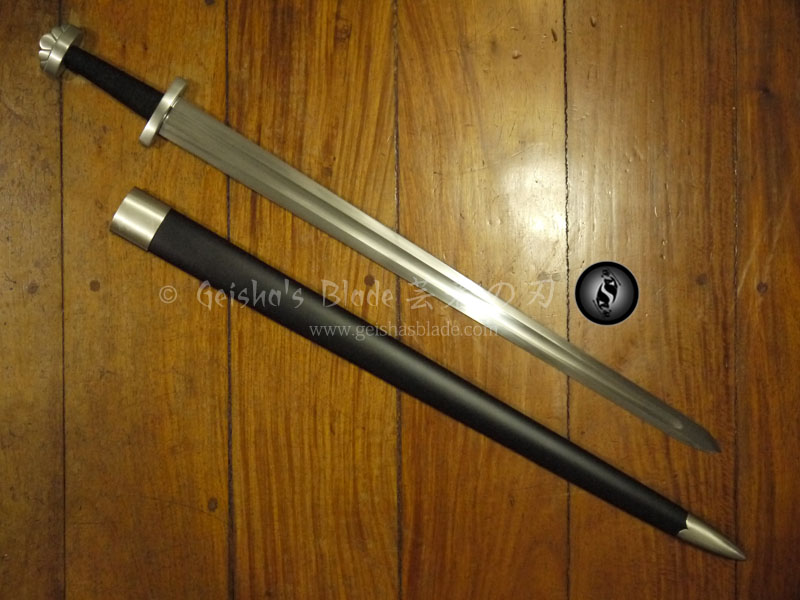
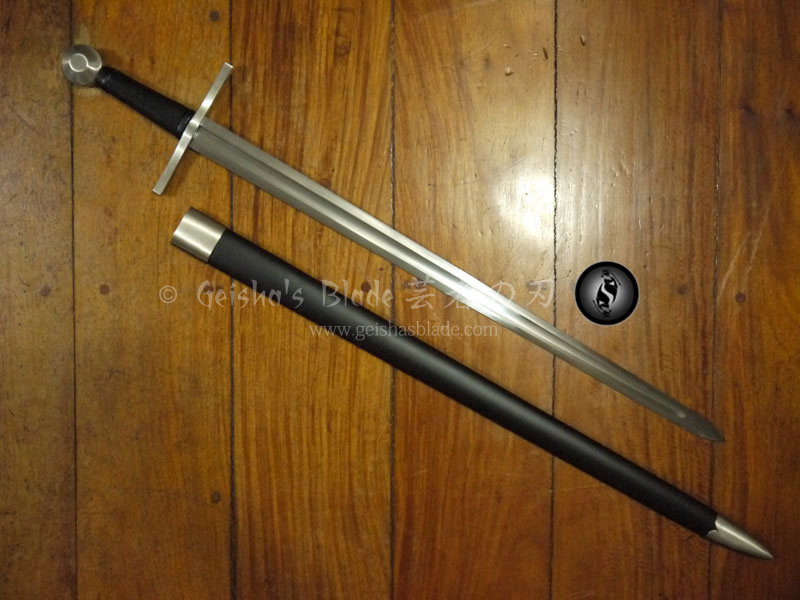
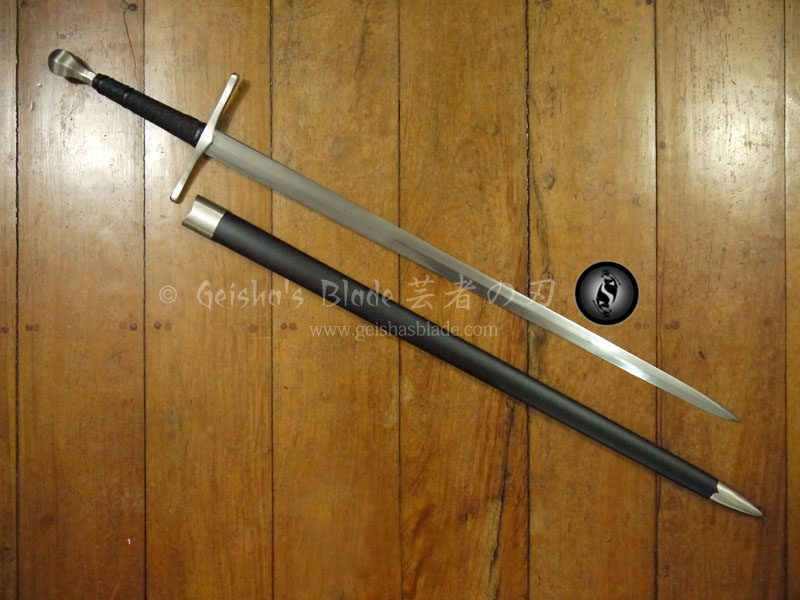
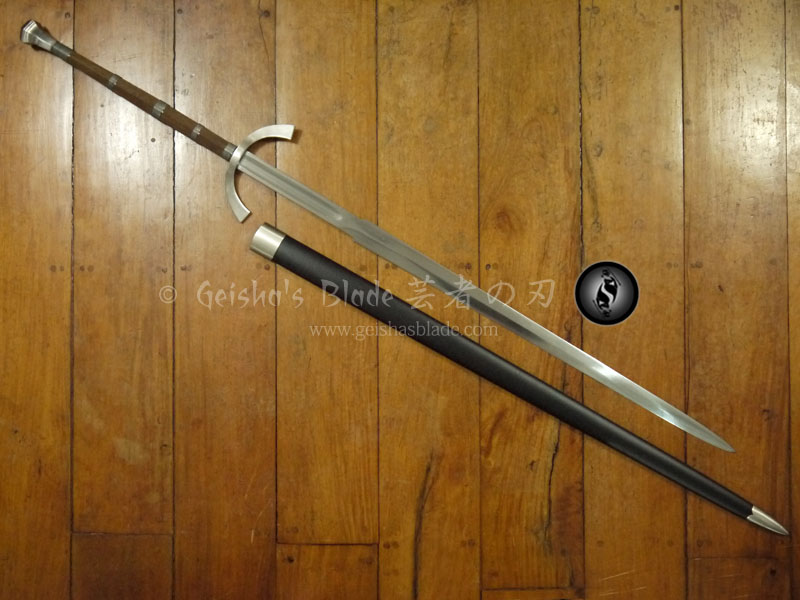
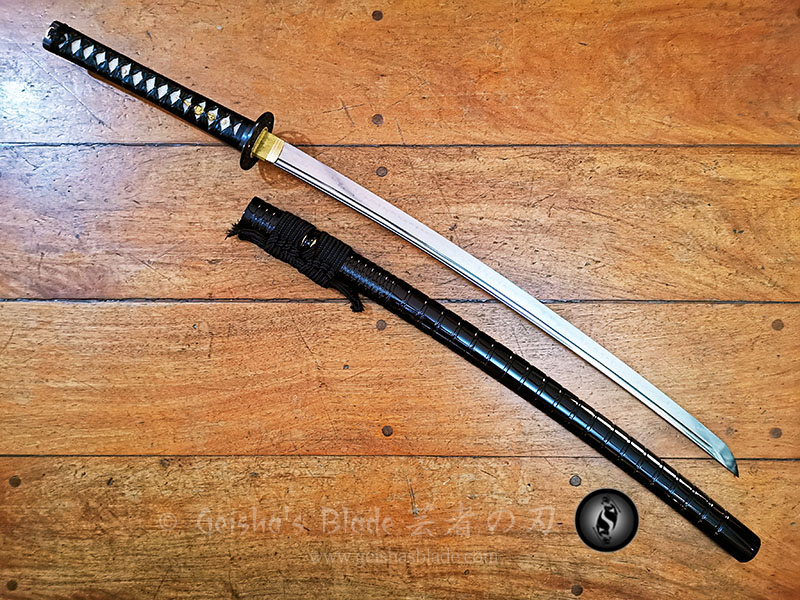
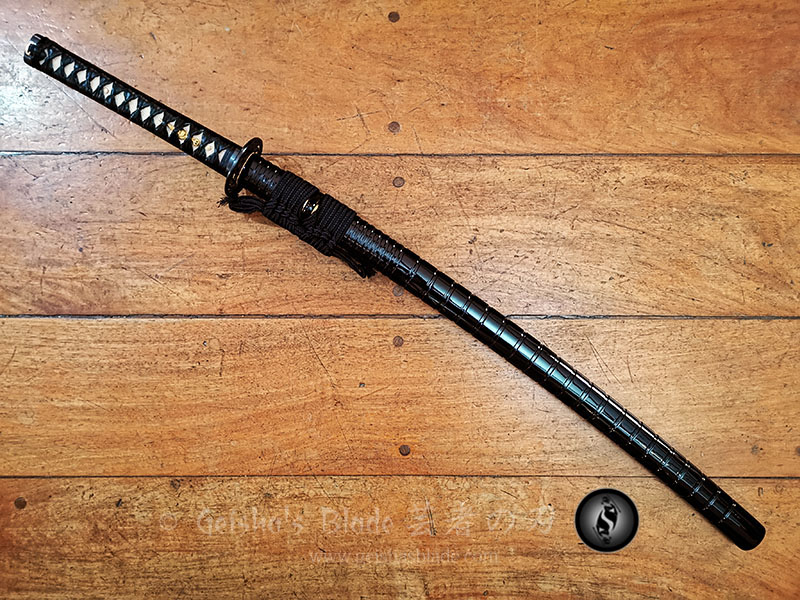
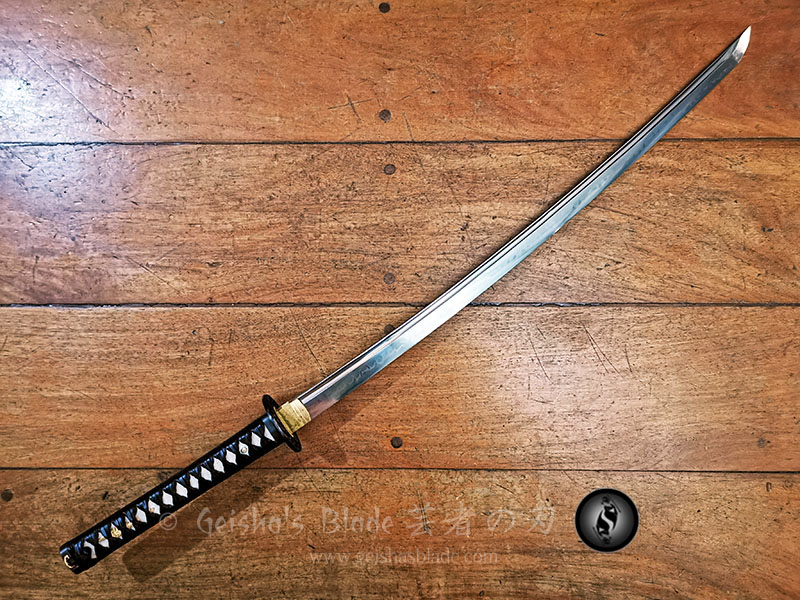
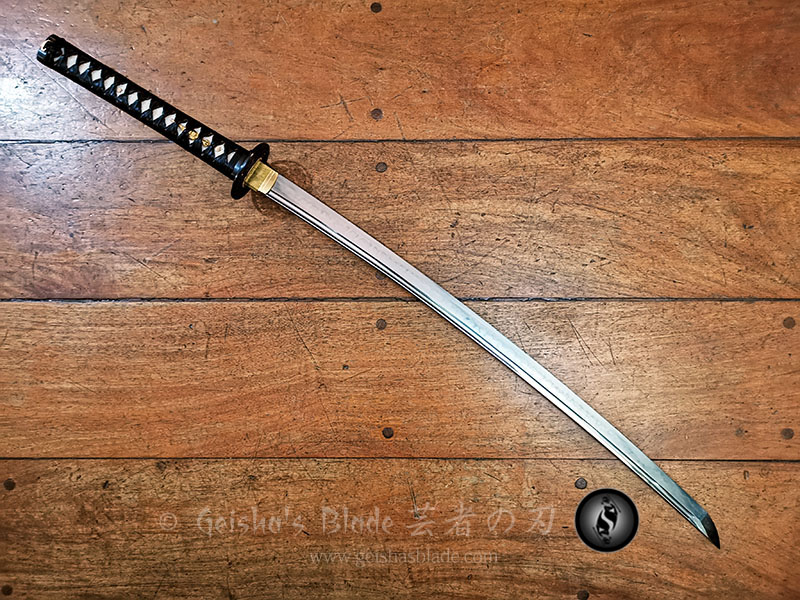
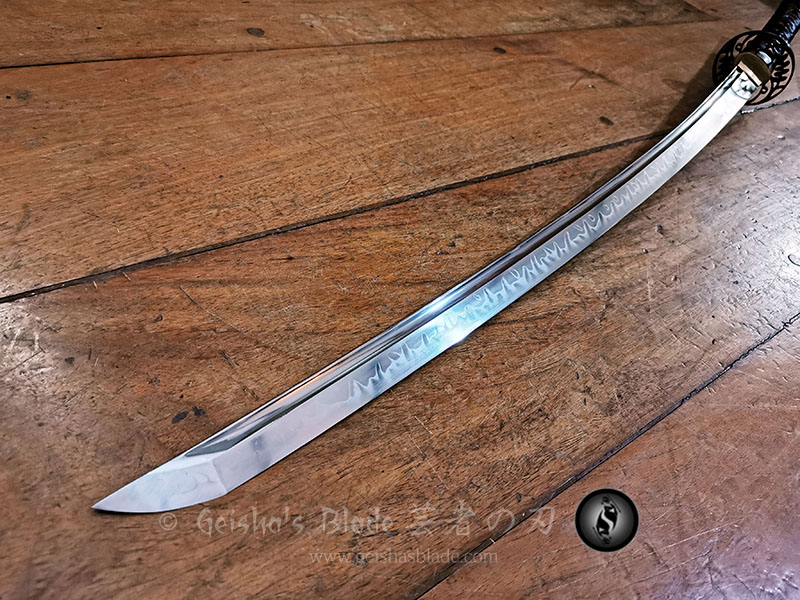
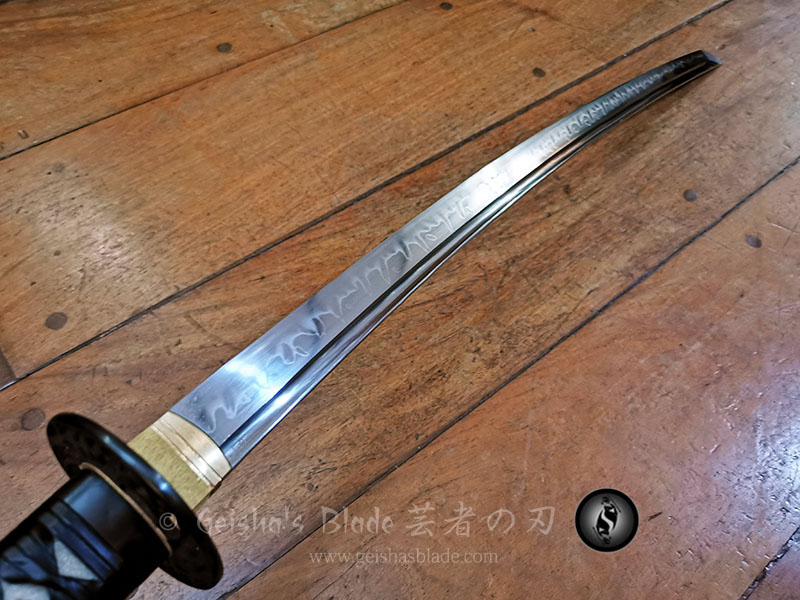
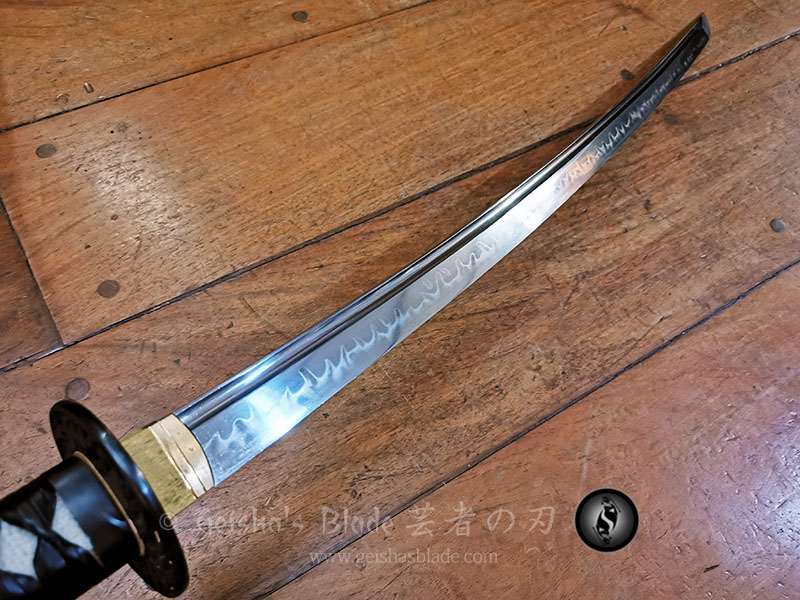
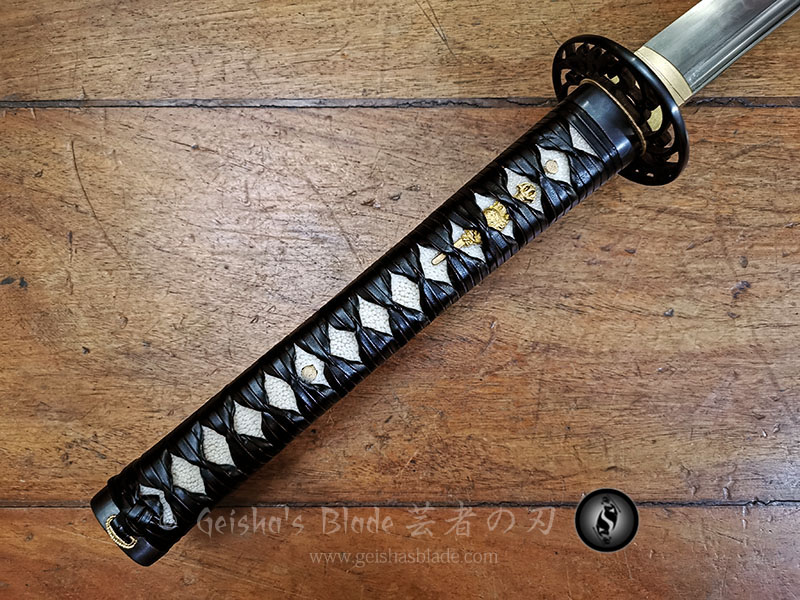
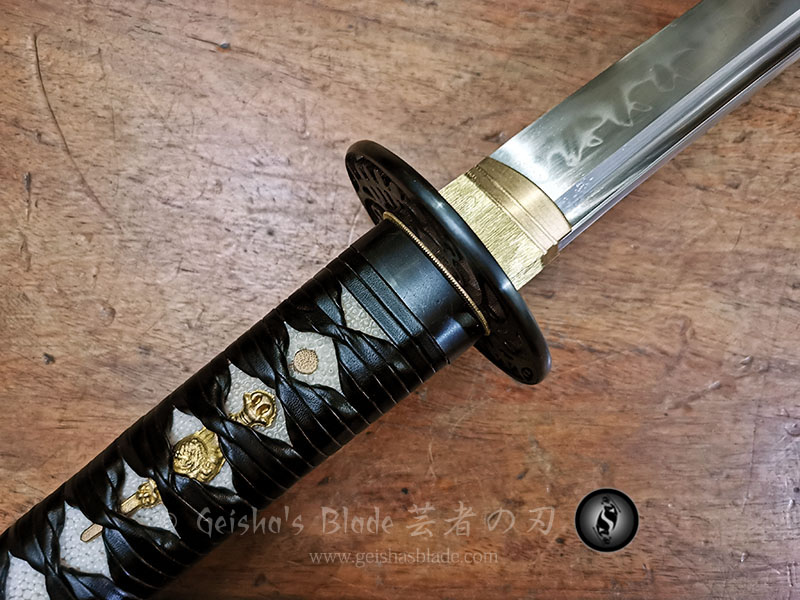
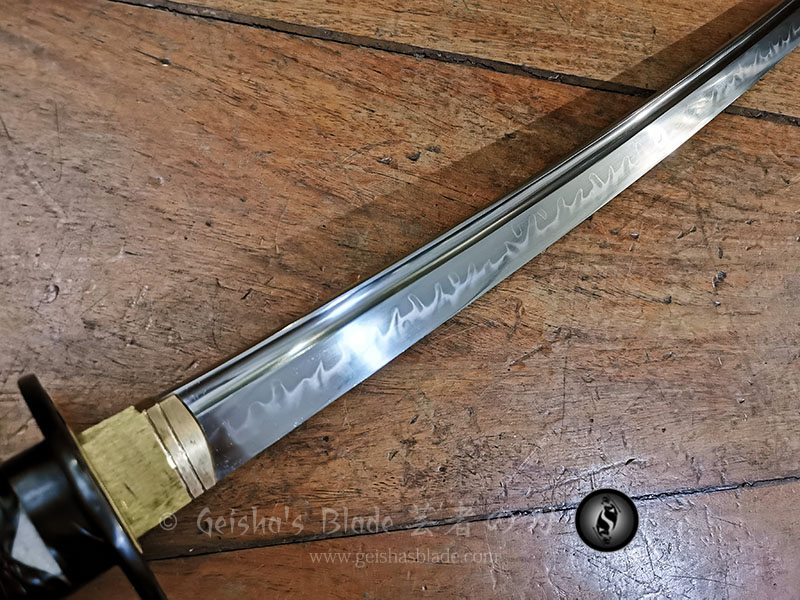
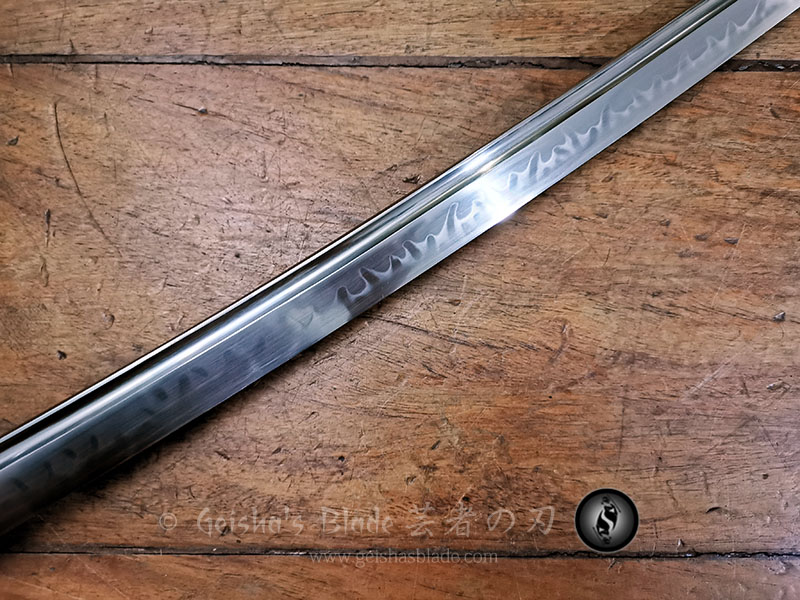
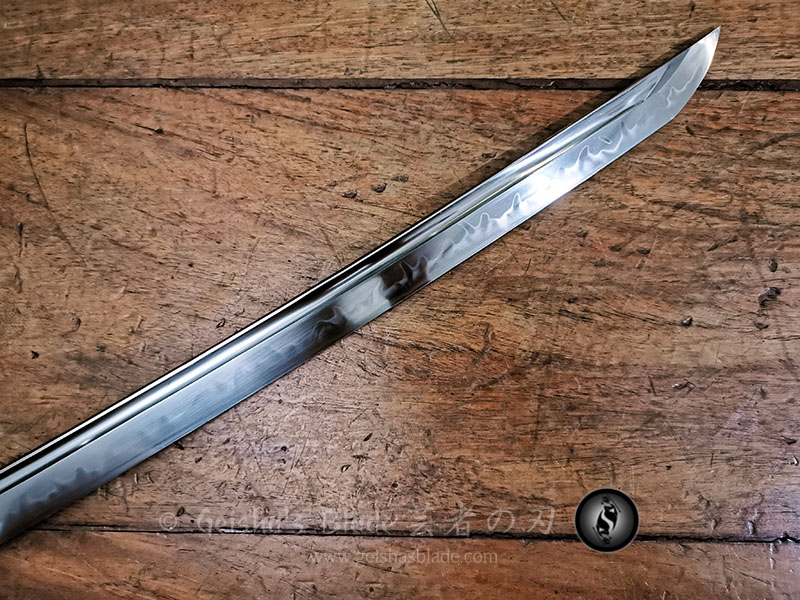
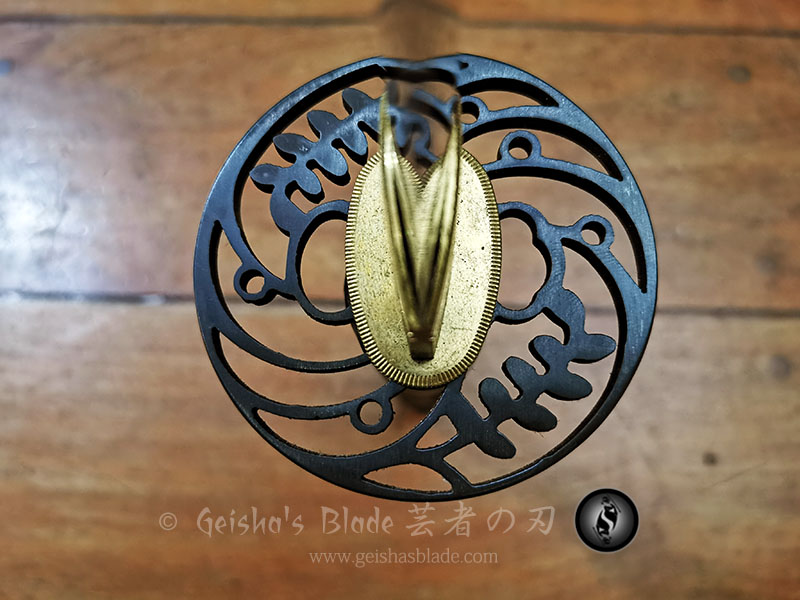
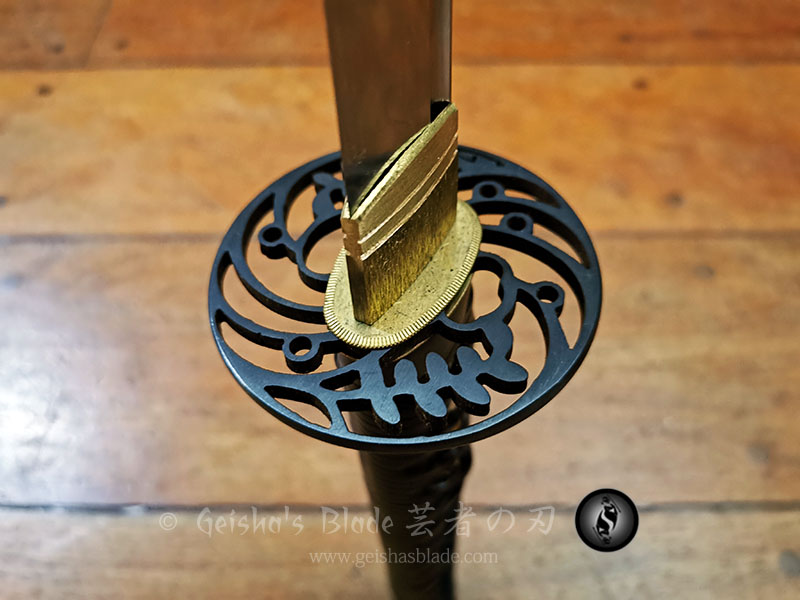
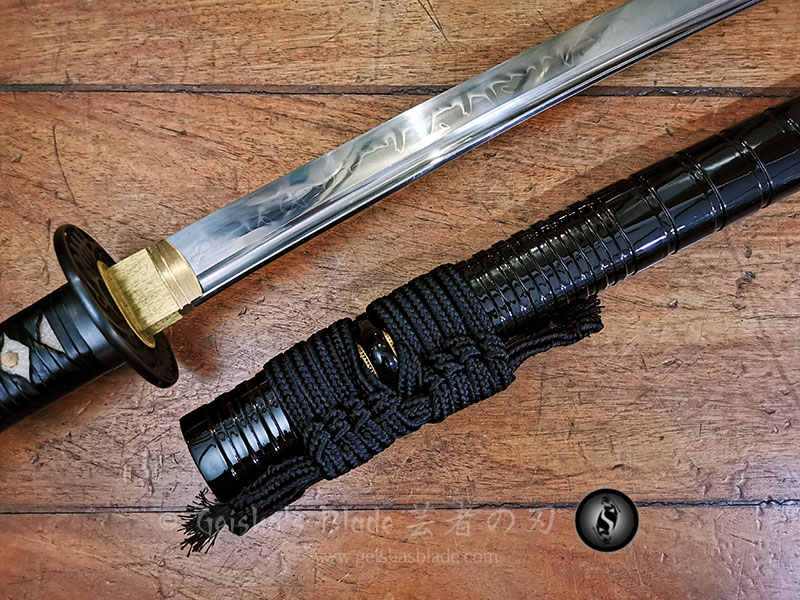
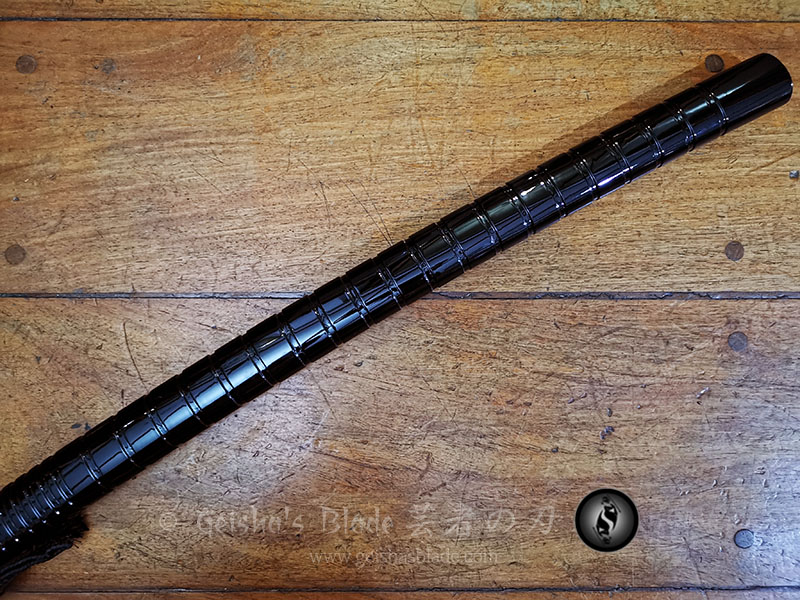
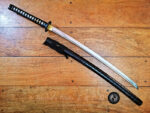
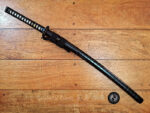
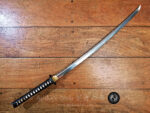
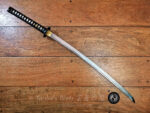
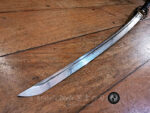
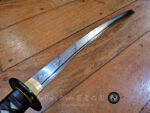
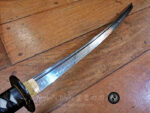
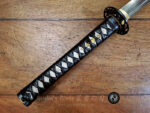
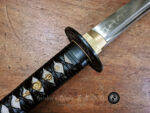
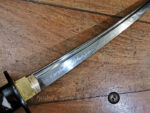
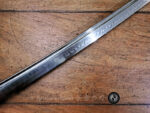
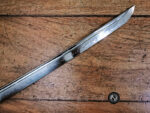
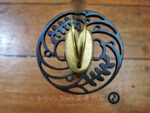
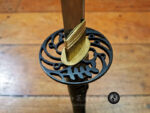
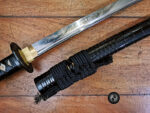
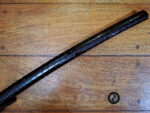
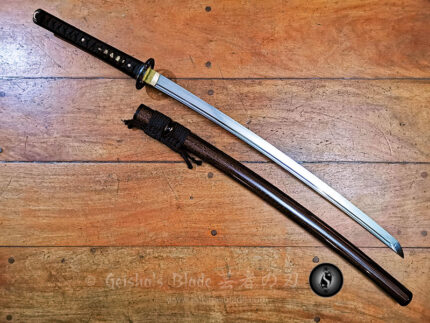
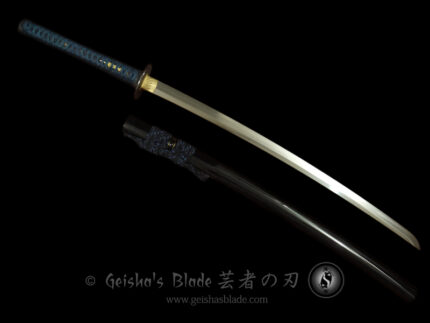

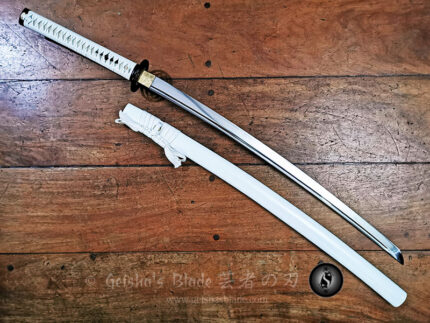
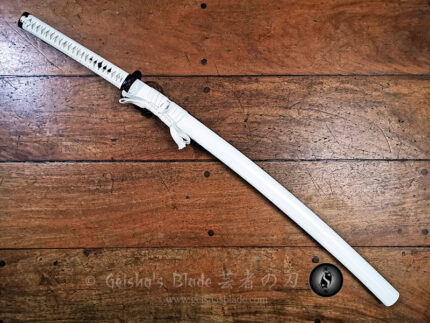
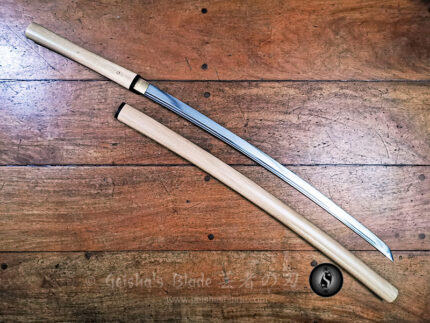
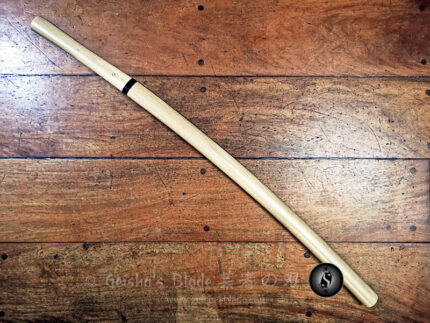
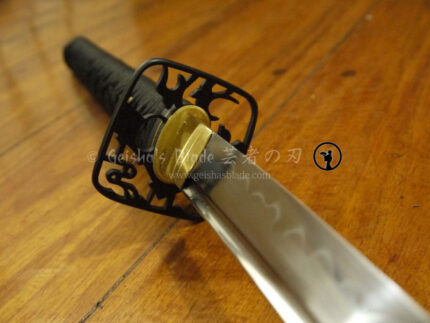
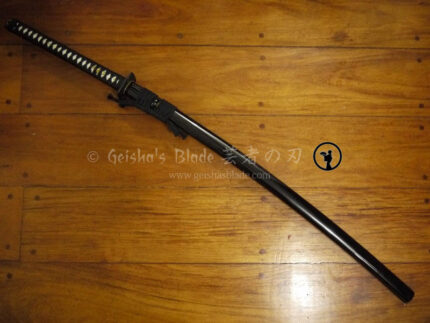
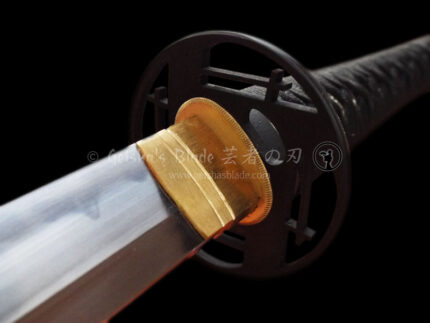
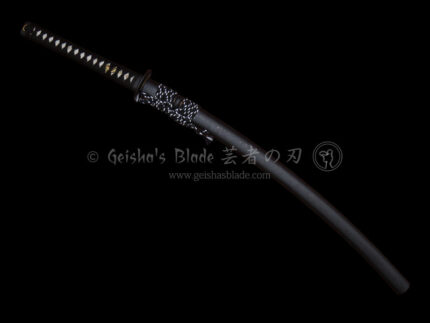
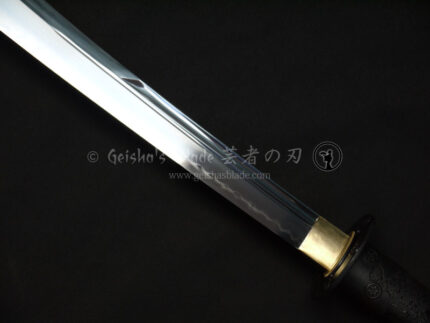
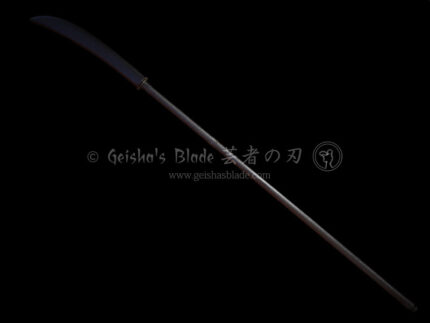
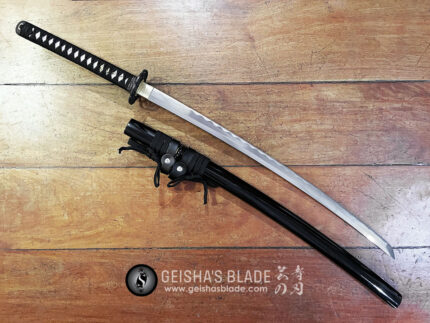
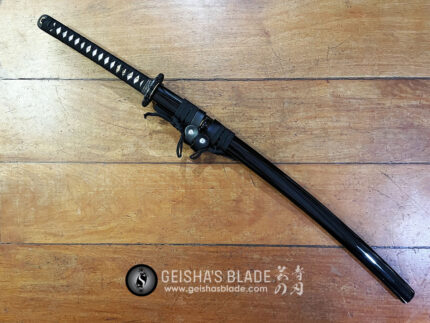
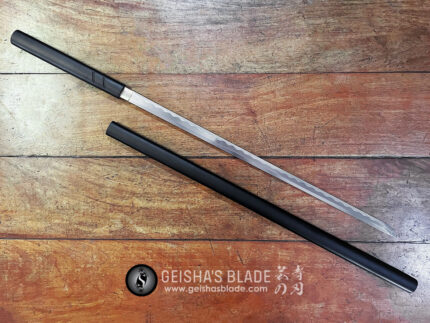
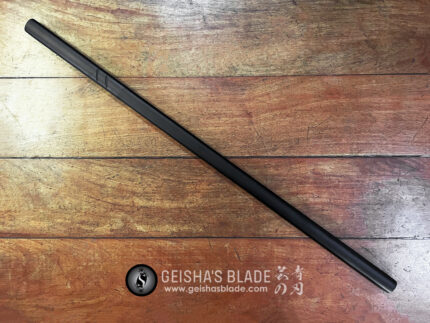
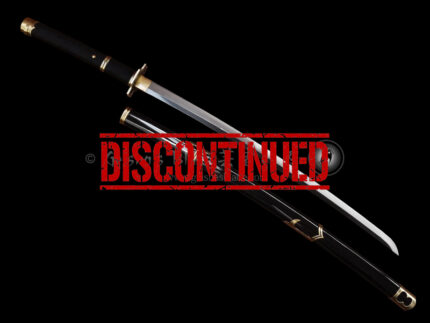
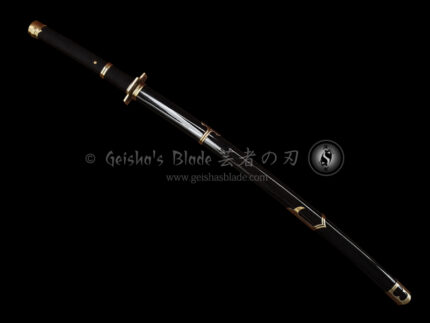
Reviews
There are no reviews yet.